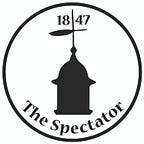Nimrud: A reappearance of grief and transformation
by Isha Parkhi ’21, Contributing Writer
Last Monday, Oct. 19, the Wellin Museum of Art opened its latest exhibit: Michael Rakowitz: Nimrud. The brainchild of Iraqi-American artist Michael Rakowitz, Nimrud functions as a memorial, a shrine, and a ‘reappeared’ crime scene. Born in New York, Rakowitz was inundated with news broadcasts celebrating the American invasion of Iraq in 2003. As a third generation Iraqi immigrant, Rakowitz observed a dichotomy of views: the public opinion he heard on the news and the family stories he heard from his grandparents.
“The place that my grandparents had fled from
was being bombed by the place that they had fled to.”
The absence of representation of Iraqi culture in America was unmissable. On a visit to a local Brooklyn grocery store that his family frequented, Rakowitz came across a can of date syrup that the owner described as belonging to Baghdad. The label, however, read “Product of Lebanon,” and the store owner explained that the post-2003 market required Iraqi vendors to smuggle their products across borders to be labelled and shipped from Lebanon in order to guarantee their entry into the United States. Rakowitz found himself surrounded by these products which he saw as a “veiled provenance- the pressures of xenophobia had been visited on these commodities.” He found a similarity between these objects whose Iraqi heritage had been removed from their skin and the historic palace of Nimrud, which was robbed of the very walls that were its foundation.
Thus, using wrappers of Iraqi food products in a form of papier-mâché, Rakowitz ‘reappears’ Room H from the Northwest palace of the ancient Assyrian city of Nimrud (located near Mosul in present-day northern Iraq). The panels are ‘reappeared’ to scale and are meant to depict the view one would have had inside if they were in the palace the day before ISIS attacked it in 2015.
However, during the mid-19th century, private collections and public institutions throughout the Western world acquired panels off the walls. They broke apart the reliefs to pick parts that most appealed to them- which are now exhibited in museums all over the world, including in major cities such as London, New York, and Paris. Hamilton College, too, owns a fragment of a relief from the palace.
Rakowitz is extremely intentional with his work and chooses the word “reappear” instead of “recreate,” alluding to the fact that the palace can never be replaced — the damage is permanent. The destruction of the Northwest palace began long before ISIS came onto the scene, and the blank walls in the exhibit serve as “a palimpsest of different moments of removal.” Rakowitz commemorates another strippage of Iraqi history in a section of Nimrud, where he reappears 43 objects: some looted from the National Museum of Baghdad after the U.S. invasion of 2003, others from Damascus and Palmyra that were endangered or lost in the Syrian Civil War beginning in 2013. The artifacts range from funerary busts to scrolls, all of which are marked as stolen, looted, or at risk, to date. Rakowitz and his studio have reappeared over 900 of such artifacts, but that is still only a fraction of the objects that remain missing. The objects have been arranged on a makeshift table meant to replicate the restorative process that took place at the Baghdad Museum the day after the looting, when the museum collected the remaining objects to mark inventory of what was left behind.
The table has an intentional ten-degree bend to match the angle in the processional avenue (Aj-ibur-shapu) of Ancient Babylon, after which the series is named “The invisible enemy should not exist.” As part of a long-standing tradition in connection with the exhibit, Rakowitz asks a guest — usually a historian or curator — to arrange the objects in a way the individual deems fit. For Nimrud, the Wellin Museum and Rakowitz gave the opportunity to arrange the sculptural artifacts to two student docents who work at the museum. Thus, Emma Berry ’21 and I decided on the theme of a journey through Iraq and arranged the objects according to the locations to which they belonged. We mapped out the path (Palmyra, Nineveh, Nimrud, Telul eth-Thalathat, Khafaje, Tell Asmar, Tell Agrab, Umm al-Hafriyat and Abu Salabikh) and arranged the objects as we would have seen them if we were on a road trip through the country. We wanted to approach the task with the kind of joy and love which Rakowitz breathes into every piece he fashions. His work grieves the loss of a culture and a people, yet it celebrates the beauty and resilience of the Iraqi community and its heritage just the same. In Michael Rakowitz’s own words, “Iraq should not have to be humanized only through the past. We can use the past to wield something not as nostalgia, but as a blueprint for the future.”
The Wellin Museum is open by appointment to Hamilton College students, faculty, and staff. In-person tours by appointment as well as virtual programs and experiences can be arranged. For members of the Hamilton College community interested in scheduling an appointment, please email wellin@hamilton.edu.
————–
NOTE: This article was edited on Nov. 9, 2020 to reflect that the artist was born in New York, and that the objects displayed were not only from the Baghdad Museum but also artifacts from Damascus and Palmyra that were endangered or lost in the Syrian Civil War beginning in 2013.
